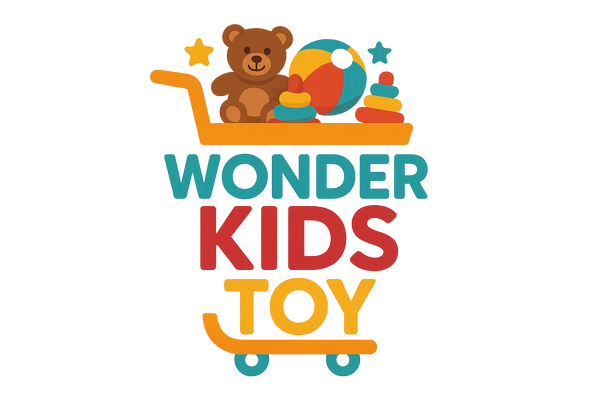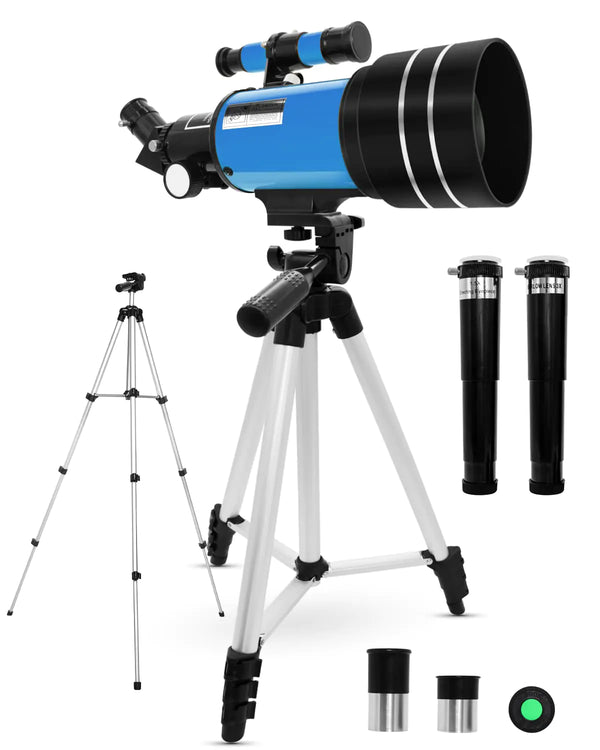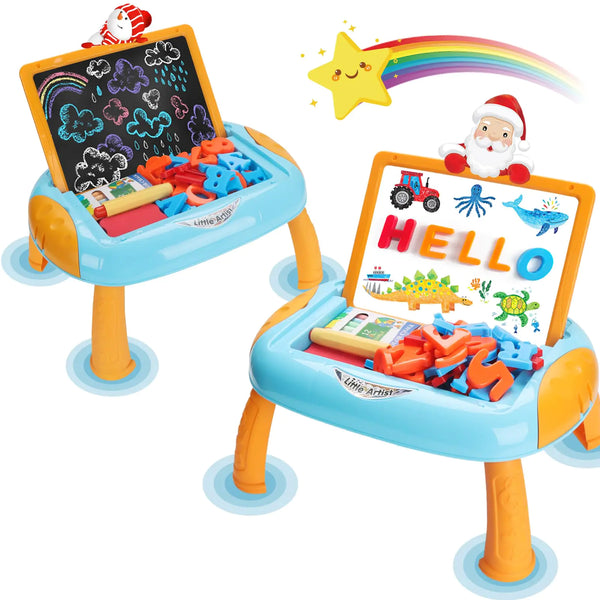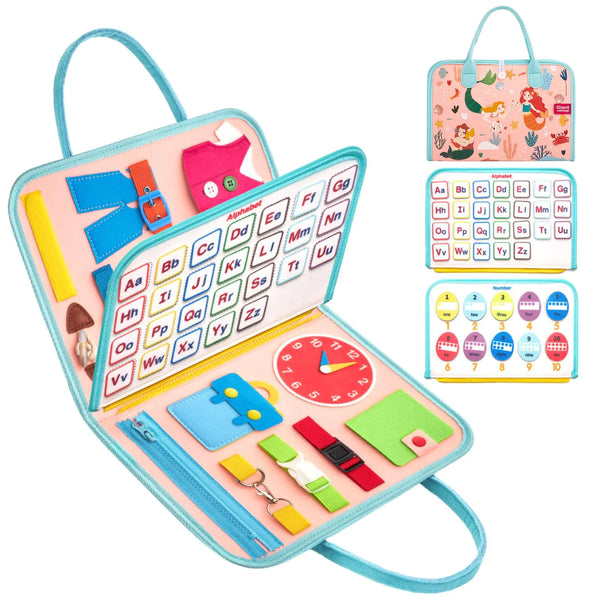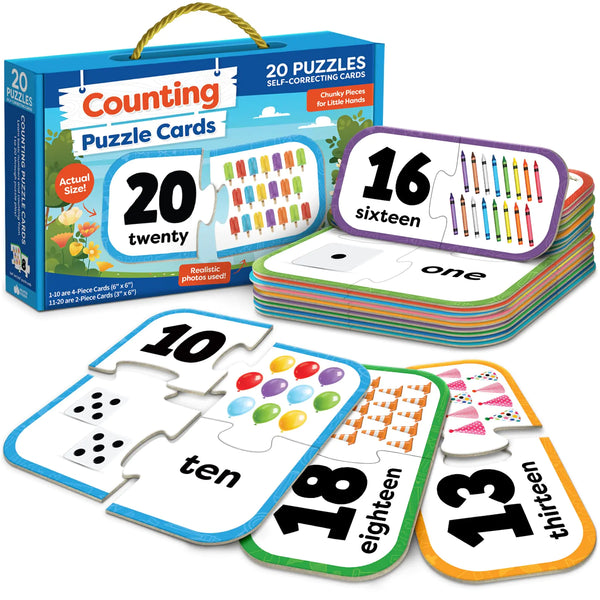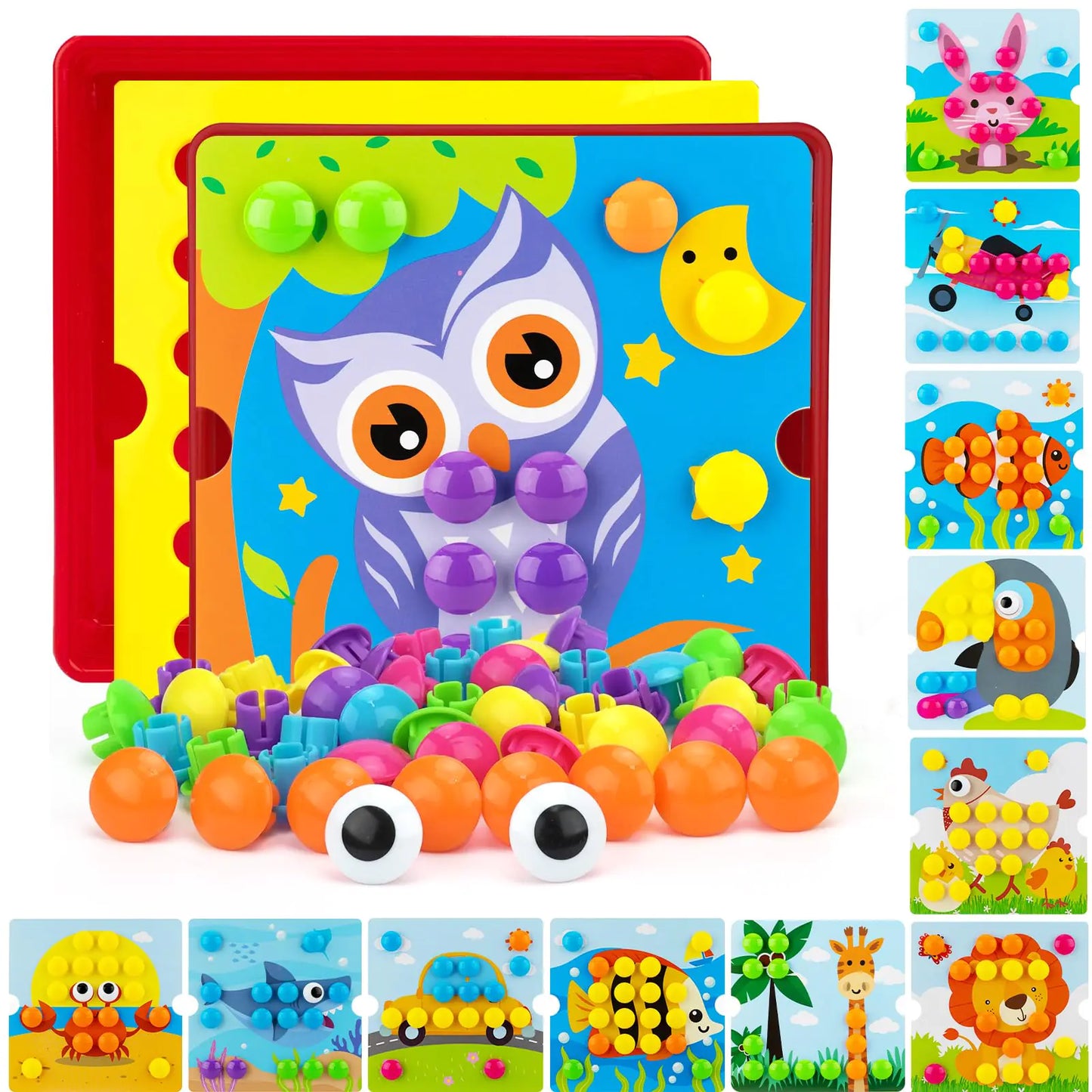As a dad, I've seen firsthand how quickly kids can get bored with a toy that only does one thing. You know the ones – the super flashy, battery-operated gadgets that sing a song or perform a trick, then sit forgotten in the corner. While those can be fun for a moment, I've come to truly appreciate the magic of toys that don't have all the answers. I'm talking about open-ended toys and creative toys – the kind that invite kids to be the directors, the builders, the storytellers of their play.
I remember watching my youngest spend an entire afternoon with a simple set of wooden blocks. One minute, they were a castle for a knight; the next, a cozy house for stuffed animals; and then, a winding road for his toy cars. There were no instructions, no buttons to push – just pure, unadulterated imagination at work. It was in those moments that I truly grasped the profound importance of imaginative play toys and the value of providing tools that foster creative development.
What Makes a Toy "Open-Ended" or "Creative"?
The terms "open-ended toys" and "creative toys" often go hand in hand because they share a common philosophy: they allow children to dictate the play, rather than the toy dictating to the child.
Open-Ended Toys: The Sky's the Limit
An open-ended toy can be used in countless ways, has no predetermined outcome, and has no right or wrong way to play. They don't come with a strict set of instructions.
-
Characteristics:
- Versatility: Can be transformed into anything a child imagines.
- No Single Outcome: The play is process-oriented, not product-oriented.
- Encourages Problem-Solving: Kids figure out how to use them to achieve their imaginative goals.
- Promotes Adaptability: The same toy can be used in different ways as a child grows or their interests change.
Think about a plain cardboard box. One day, it's a car; the next, a spaceship; the day after, a secret fort. That’s the epitome of an open-ended toy.
Creative Toys: Tools for Expression
Creative toys are those that provide the materials and inspiration for children to express themselves, make something new, or design their play scenarios. While often open-ended, they specifically focus on fostering artistic and inventive expression.
-
Characteristics:
- Tools for Creation: Art supplies, building materials, components for construction.
- Encourage Self-Expression: Allow children to bring their inner world to life.
- Develop Artistic Skills: Promote drawing, sculpting, designing, and musical exploration.
- Nurture Originality: Value unique ideas and approaches.
These types of toys are the bedrock of truly meaningful playtime. They’re not just occupying time; they’re building brains.
The Undeniable Power of Imaginative Play
If there's one thing I champion as a dad, it's imaginative play. It's when kids step into different roles, create make-believe scenarios, and construct entire worlds inside their heads. This isn't just "playing pretend"; it's a fundamental part of healthy childhood development.
The Benefits of Imaginative Play Toys:
-
Cognitive Development:
- Problem-Solving: Kids encounter "problems" within their play (e.g., "How do I get my doll across the lava?") and find solutions.
- Language Skills: They use new vocabulary, narrate their stories, and practice dialogue.
- Symbolic Thinking: Understanding that one object can represent another (a block is a phone, a blanket is a cape).
- Sequencing: Planning out the steps of a story or scenario.
-
Social and Emotional Development:
- Empathy: Taking on different roles helps them understand other perspectives and feelings.
- Cooperation: When playing with others, they learn to share, negotiate, and work together.
- Emotional Processing: Play can be a safe way to explore and process feelings they encounter in real life.
- Self-Regulation: Learning to manage their impulses and stick to the "rules" of their imaginary world.
-
Creativity and Innovation:
- Originality: Coming up with unique ideas and scenarios.
- Flexibility: Adapting their ideas as play evolves.
- Storytelling: Developing narrative skills.
I love listening to my kids' intricate conversations when they're lost in imaginative play. One minute, they're doctors performing surgery; the next, daring astronauts exploring a new planet. Their minds are constantly expanding and connecting new ideas.
Building Worlds: Construction Sets and Building Blocks
When it comes to open-ended toys that spark both imagination and cognitive skills, construction sets and building blocks are genuinely at the top of my list. They are the quintessential tools for hands-on, creative expression.
My kids have amassed quite a collection of various building blocks over the years – from classic wooden sets to interlocking plastic bricks. Each type offers a unique building experience, but the core benefit remains the same: the power to create whatever they envision.
Why Every Kid Needs Building Blocks and Construction Sets:
- Unleashed Creativity: There are no fixed instructions beyond gravity! Kids can build anything from a simple tower to an elaborate city.
- Spatial Reasoning: They learn how shapes fit together, how to create stable structures, and understand concepts like balance and symmetry.
- Problem-Solving: Why did my tower fall? How can I make this bridge stronger? These questions naturally arise during building.
- Fine Motor Skills and Hand-Eye Coordination: Manipulating and connecting blocks requires precision and dexterity.
- Persistence: It takes patience and focus to build a complex structure.
- Mathematical Concepts: Indirectly learning about counting, patterns, and geometric shapes.
I've seen my kids spend hours immersed in building, sometimes following a picture on a box, but more often than not, just letting their imaginations guide them. They are truly the ultimate creative toy for hands-on learning.
Stepping into Roles: Pretend Play Sets and Role Play Toys
Another cornerstone of imaginative play toys is pretend play sets and role play toys . These are the costumes, props, and themed environments that allow children to step into different characters and scenarios.
- Doctor Kits: Pretending to be a doctor helps children understand and cope with medical visits, while also practicing empathy.
- Kitchen/Food Sets: Cooking imaginary meals, running a restaurant – these foster creativity and social skills.
- Tool Benches: Fixing imaginary objects, building with kid-safe tools.
- Dress-Up Clothes: Transforming into a superhero, a princess, an animal – the possibilities are endless.
My house is often a bustling imaginary hospital or a gourmet restaurant, complete with tiny plastic food and detailed menus. These role-play toys aren't just for fun; they're essential for children to navigate their world, explore social interactions, and develop empathy. They help kids understand what different jobs entail, learn to share, take turns, and negotiate narratives, making them powerful tools for dramatic play.
The Timeless Appeal of Wooden Toys for Imaginative Play
When it comes to open-ended toys and imaginative play, there's a special place in my heart for wooden toys that foster creative play. There's a natural warmth and tactile quality to wood that feels right in a child's hands.
- Durability: Wooden toys are built to last, often becoming cherished heirlooms.
- Simplicity: Their often minimalist design encourages the child to fill in the details with their imagination. A wooden car is just a car, but it can be any color, any speed, and any destination in their mind.
- Sensory Experience: The weight, texture, and natural scent of wood provide a rich sensory experience.
- Safety: High-quality wooden toys are often painted with non-toxic finishes and are naturally sturdy.
We have a set of plain wooden blocks that have been used to create a castle, a farm, a space station, and countless other things. Their simplicity is their strength, allowing my kids' creativity to soar. These wooden toys for imaginative play are truly a testament to the power of less being more.
Nurturing Creativity: Beyond the Obvious
Creativity toys aren't just about art supplies, though those are indeed fantastic. They are toys that encourage children to think differently, experiment, and express themselves in unique ways.
1. Storytelling Toys: Building Narratives
These toys directly support storytelling and narrative development.
- Puppets: Children can create characters and act out stories, developing dialogue and plot.
- Figurines/Small World Play: A collection of small animal figures or people allows kids to create miniature worlds and narratives.
- Story Cubes/Cards: Prompts that spark imaginative tales.
I love listening to the elaborate stories my kids weave with their puppets or little figures. It’s an excellent way to see their language skills and creative thinking develop.
2. Loose Parts: The Ultimate Open-Ended Materials
"Loose parts" are collections of natural or manufactured materials that can be moved, combined, redesigned, and put together in endless ways. Think of them as the raw ingredients for pure creativity.
- Examples: Pinecones, stones, fabric scraps, bottle caps, cardboard tubes, buttons, sticks, shells.
- Benefits: Promote problem-solving, construction, imaginative play, and fine motor skills. They encourage children to see potential in everyday objects.
We have a dedicated bin for "loose parts" in our playroom, and it's amazing what masterpieces emerge from a handful of random items.
The Dad's Playbook: Encouraging Open-Ended and Creative Play
As parents, we play a vital role in fostering this type of play. It's not just about providing the toys; it's about giving the space, time, and encouragement.
- Provide Time: Uninterrupted blocks of time are crucial for deep, imaginative play to unfold.
- Offer a Variety of Materials: Don't just stick to one type of toy. A mix of construction sets, pretend play sets, and art supplies provides more options.
- Ask Open-Ended Questions (Again!): "What are you building?" "Who lives here?" "What's happening next?" – These prompt deeper thinking.
- Join In (When Invited): Sometimes, they want you to be part of their world. Other times, they need space to explore independently. Read their cues.
- Limit Screen Time: Excessive screen time can stifle imaginative play. Balance is key.
- Value the Process, Not Just the Product: It’s not about building the "perfect" castle; it’s about the joy of building it.
Embracing open-ended toys and creative toys in your home is one of the best gifts you can give your child. It's an investment in their imagination, their problem-solving abilities, their social skills, and ultimately, their boundless potential. These aren't just things to play with; they're catalysts for growth, sparking the inner artists, engineers, and storytellers within.
Suppose you’re looking for a trusted source for high-quality imaginative play toys, durable construction sets, and a wide array of other creative and developmental resources for kids. In that case, I highly recommend checking out wonderkidstoy.com. They are an established brand recognized for their commitment to delivering products that genuinely enhance a child’s learning and developmental journey. Explore their collection today and watch your child's imagination soar!

